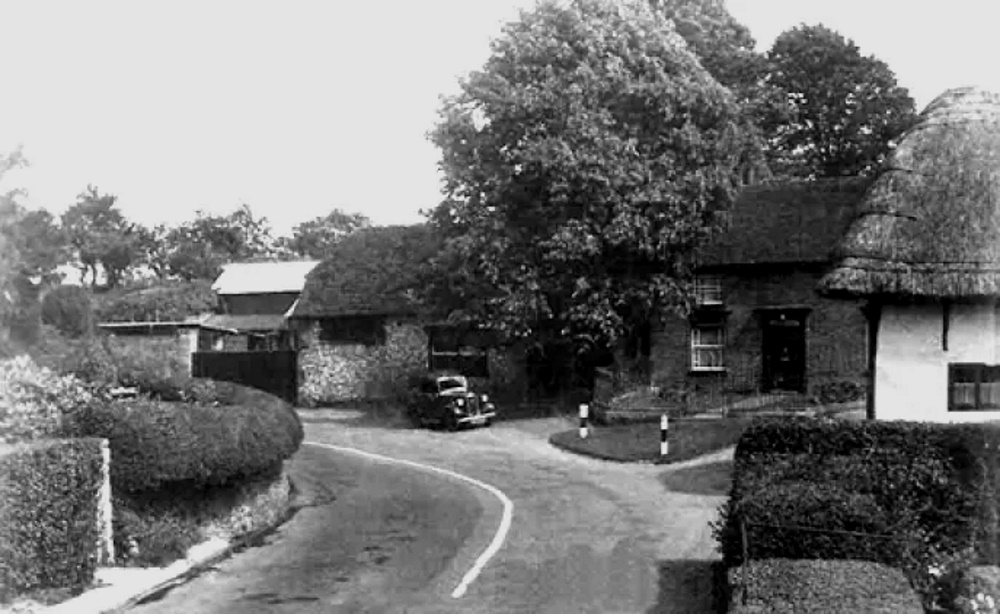There is an early mention of a Nonington butcher in Nonington in a sale document of 1659 relating to the sale of The White Horse alehouse in Church Street by Henry Pingle of Nonington, a butcher by trade, and his brothers. The Pingle family appear in Nonington church records throughout the 17th century and into the early 18th century.
The Easole Street butcher’s
In the 19th and 20th centuries the principle butcher’s premises were in Easole Street and are now called Southdown House. The name almost certainly derives from one of the butchers, “Charlie” Smith, who specialised in fattening and butchering the Southdown breed of sheep. After the butcher’s closed in the early 1970’s the premises became an antiques and furniture restoration business and when this business closed the old shop, slaughter-house and cold store were converted into additional living accommodation.
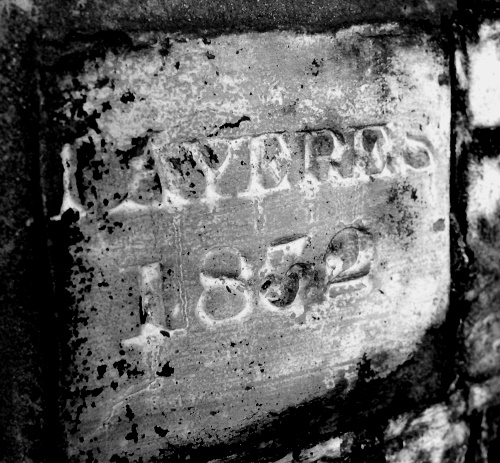
In the wall to the left of the entrance to the old butcher’s yard is a small stone tablet engraved with the name “I Ayers” and the date, “1832”. John Ayers was first recorded as a butcher resident in Easole Street in the parish rates book around 1809, apparently at these premises which occupied what had been a old chalk quarry supplying a nearby lime kiln situated across the road. By 1828 his rates had more than trebled as he extended and improved the premises, in addition to which he also owned or rented various pieces of land. Butchers were also graziers who bought livestock for fattening for slaughter from local farmers and small holders either privately or at local livestock markets such as Sandwich and Lyminge. There was also a bi-annual cattle fair held at Wingham until the Mid-19th century . Arthur Hussey recorded in his “Chronicle of Wingham”, published in 1895, that “The village also had two fairs every year, held on May 12th and November 12th, for cattle, and were considerable ones, even down to some twenty years ago”.
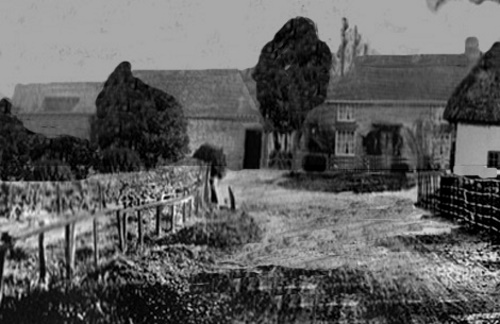
The Easole Street butcher’s premises circa 1910, a couple years after my paternal grand-father, Frank Webb, moved to Nonington to work there as a journeyman butcher. From the left: the slaughter house, the shop, & Southdown House. A corner of Southdown Cottage can be seen on the right
My late grandfather Frank Webb worked as a butcher there from the early 1900’s until the mid-1950’s, and when he was a journeyman to Nonington butcher Edward “Teddy” Woodruff he often had to drive newly purchased livestock on foot from the weekly Thursday livestock market at Sandwich to the Easole Street premises where the livestock would then be killed and butchered in the flint built slaughter house attached to the side of the shop. The wheel used for hoisting carcasses up for butchering is still there in the old slaughter house, which is now a residence.

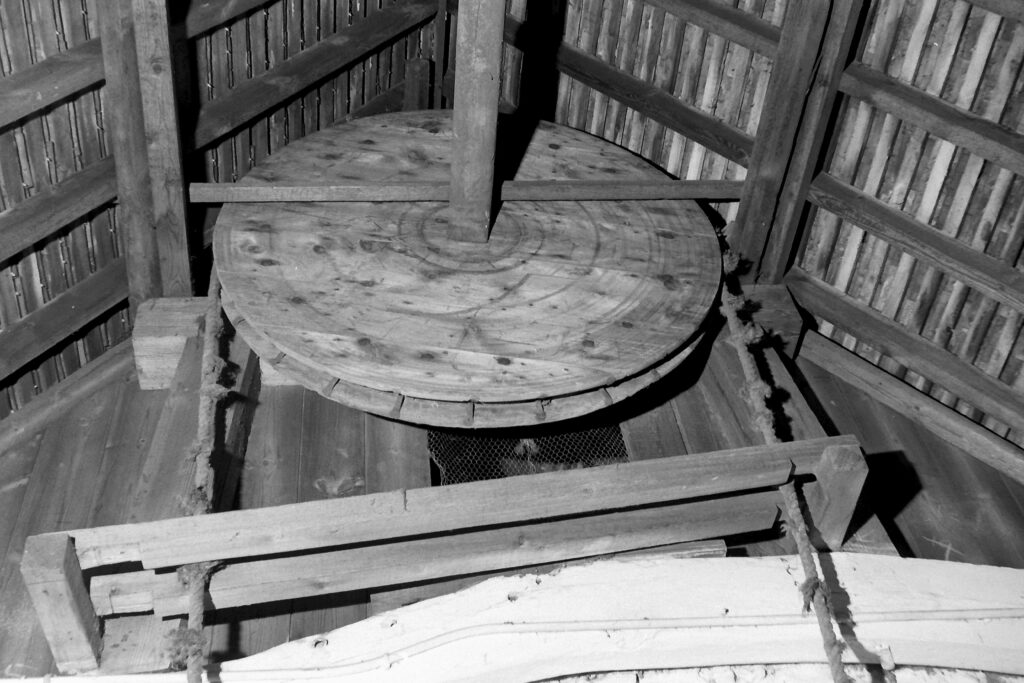
In those days pubs were open all day and market days in those Sandwich pubs close by to the market, such as The Red Cow and Market Inn, were especially busy. Teddy Woodruff enjoyed a post-market drink and frequently over indulged. His drinking companions often put him into his horse drawn trap and sent the horse on its way, and the well practised animal would find its way home to Nonington. Just short of the butcher’s premises Teddy Woodruff used to shout out for my grand-father to “open them bloody gates, boy”, and my grand-father had to open the gates at the side of the slaughter house and let Teddy in. My grand-father would then help him down and go inside before attending to the horse and returning to bed. At the time my grand-father slept in a small room under the stairs. Later, in the 1930’s my late uncles Frank and John Webb helped drive cattle back from Sandwich marshes in early autumn where they had been grazing and fattening during the spring and summer. My Uncle John worked as an apprentice for “Charlie” Smith, the butcher, for a time before joining the R.A.F. for war service, after which he moved to Gravesend.
Various pieces of grazing land in and around the parish, as well as the pigsties in the nearby White House farm-yard, now houses, were rented by different butchers over the years. The bridle way to Eythorne, still known as Butcher’s Alley or Butcher’s Lane, runs past a field immediately adjoining the houses on the north-east side known in the past as Butcher’s Meadow.
The 1841 census records John Ayers as the only butcher in Nonington , and there is no record of his employing anybody in the business. However, Henry Ayers, his only son and aged 20, is listed as living with his father, so it is almost certain that Henry was employed by his father in the business as the 1851 census records John Ayers employing his son and one boy. Henry is listed as a butcher, single, aged 31 and living on the premises.
Henry succeeded to the business in the 1850’s and in 1861 is listed as a butcher and farmer of 14 acres with Richard Stokes of Barfestone, aged 17, as a living in butcher’s boy. Henry Critch of the Drove in Holt Street is the only other butcher in Nonington recorded in the 1861 census and would therefore worked for Henry Ayers.
The Easole butcher’s business remained in the hands of Henry Ayers until the late 1870’s or very early 1880’s when Frederick Pittock moved from Eastry to take over the butcher’s in Easole Street. Frederick had been previously been working for his father William Pittock who had a butcher’s shop and premises in Eastry. In the 1881 census Frederick is recorded as a butcher employing one man and one boy, these would appear to be Walter Wyborn, a single journey man butcher aged 20 who lodged in Easole Street, and George Appleton, a single journeyman butcher aged 15 who lived with his family in Butter Street Cottages. There is also a census record of Edwin Appleton, a single butcher’s servant aged 12 who lived with his family on St. Alban’s Downs who was no doubt employed at the butcher’s.
Frederick Pittock carried on in business there until the late 1880’s or very early 1890’s when he moved back to Eastry to take over his father’s butcher’s shop butcher’s in Eastry High Street, possibly due to his father being no longer able to run it due to old age or illness. William Pittock died at Eastry aged 75 in 1892. The 1901 census records Frederick Pittock, master butcher, as resident in Eastry High Street.
Edward Woodruffe, a Sandwich butcher, bought the Easole Street Butcher’s premises and the 1891 census lists Edward Woodruff, aged 34, as living there along with his wife Sarah and two female servants. There is no record of how many men he employed, but the only other butcher listed in the 1891 census is Edward Culver, a 22 year old single man lodging in Easole Street, and he would undoubtedly been in Woodruff’s employ. At least one of the two live in servants would also have been employed at least some of the time in the shop.
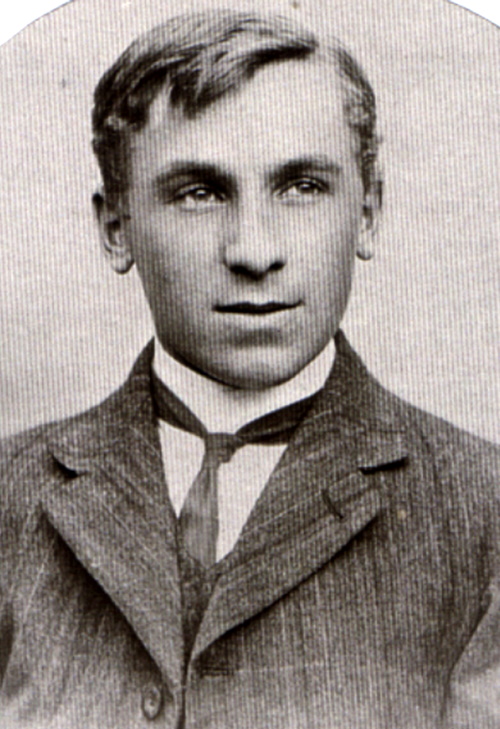
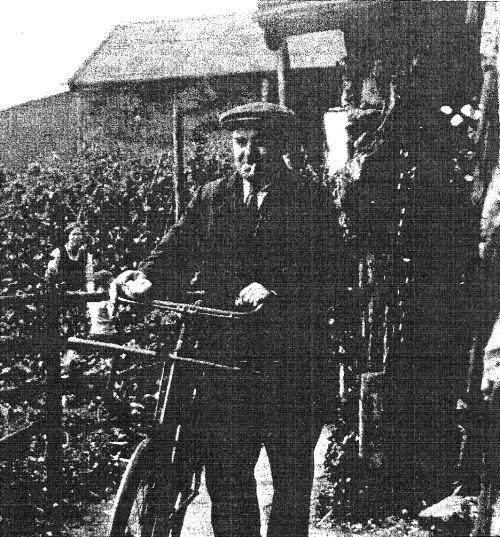
My grand-father came down from Newington-next-Sittingbourne as an apprentice to “Teddy” Woodruff around 1908, initially “living in” until he married in 1914. As a now journeyman butcher he continued to work for Teddy Woodruff and stayed on when the business was sold to Charles Smith, usually known as “Charlie”, who specialised in fattening and butchering the Southdown breed of sheep, around 1920. He bought the Southdowns in as lambs and fattened them up on various pieces of rented ground in and around Nonington. Charlie Smith liked Southdown sheep so much he named the house after the breed.

Just after the end of the Second World War the business was sold to J. R. Chapman and my grand-father worked with him for some years, as did my late mother who worked as the cashier at the butcher’s shop for a couple of years after she married my late father, Ron Webb. My grand-father left the Easole butcher’s in the mid-1950’s to work for Eastry Rural District Council as a road man a couple of years before he reached retirement age.
When he sold the business Charlie Smith moved to the top bungalow on Oak Hill, which overlooked the field at the back of “The Royal Oak”. When in the early 1950’s the local Eastry Rural District Council decided to build houses on the field Charlie did not like the thought of council houses being built opposite his bungalow, so he decided to prevent that happening. My late father and mother and my two late uncles all told me at various times that Charlie was a keen Freemason, and that’s the reason why the proposed council houses were relocated to become what is now St. Mary’s Close, just over the brow of the hill and out of view of Charlie’s bungalow!
Cyril Hearndon was the last butcher to occupy the premises, taking over in the late 1950’s and running the butcher’s shop until the early 1970’s.
Other Nonington butcher’s
Over the years there were other butcher’s at other premises in Church Street and Easole Street in Nonington. The 1851 census records Robert Penfold, aged 33, as a pork butcher living and working in Church Street Row, the former Poor House Cottages, with his widowed mother living a couple of doors away with other members of the family. The pork butcher lived and worked in what is now No. 8 in the row, and the pigs that provided his living were most likely reared close-by on what had previously been land attached to the old Poor House. Robert does not appear to have served an apprenticeship as a butcher. In the 1841 census he was recorded as an agricultural labourer aged 20 living in at Broadsole Farm, now Frogham Farm, in Frogham which was then tenanted by William Miles. It’s therefore most likely that he just raised his own pigs and then slaughtered and butchered them to sell the meat, offal, and sausages from the slaughtered animals. Robert probably took on general labouring and other casual work in addition to his pig rearing.
During the 1850’s Robert Penfold pork butcher’s business evolved into the grocer’s and beer shop recorded in the 1861 census, and by the time of the 1871 census the business was being run by Robert Penfold, aged 24, with his sister Henrietta, then aged 18, as house-keeper. Robert married in the early 1870’s, and closed the shop before moving to Battersea in South London where he is listed as living in 1881 census. The shop was only allowed to sell beer for consumption off the premises and at this time beer was commonly drunk at home as water sources were often not pure and some labourers were partly paid in beer or cider.
George Kirby, a single master butcher aged 22 and his sister, Emma, single and aged 18, were listed in 1871 as living in Easole Street with George employing Frederick Allen, a journeyman butcher, who also lived on the premises. The premises appear to have been what later became Mrs. Hill’s shop.

